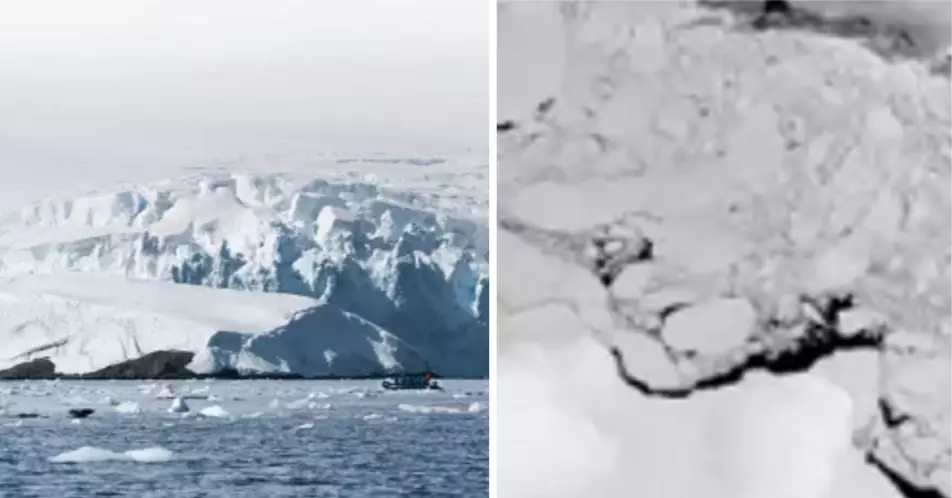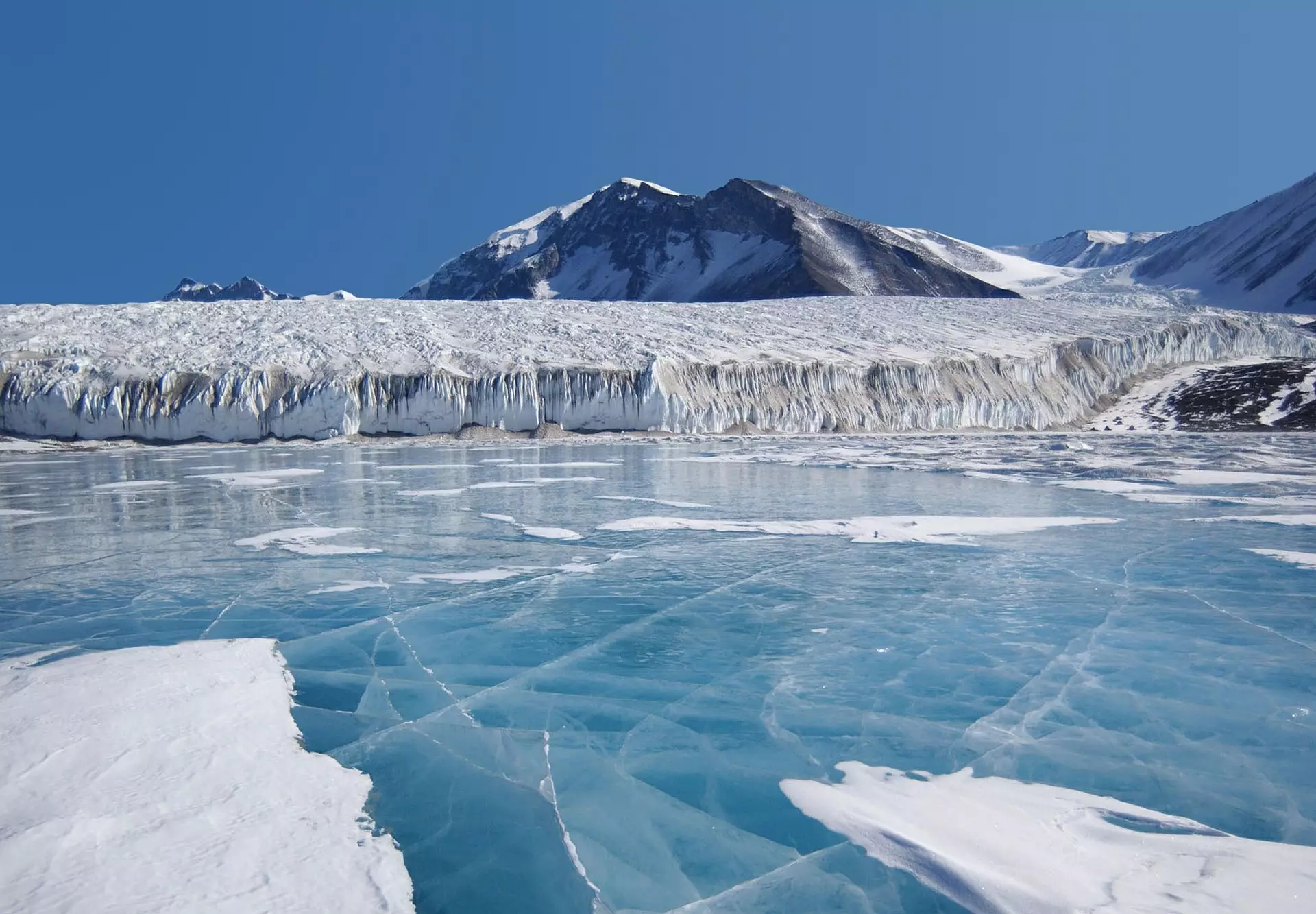
Troubling footage spanning 15 years has shown the erosion of Antarctic ice shelves, suggesting polar regions are melting at a much faster pace than first thought.
The clip shows how over time the ice recedes dramatically and it's all because of 'upside down rivers' beneath the ice's surface that have been heated due to climate change.
Advert
Warm water, due to its buoyancy in comparison to cold salty water, circulating in the Antarctic, goes up into ice shelves causing them to break off in large chunks and float back out to sea, according to researchers.
This causes sea levels to rise and because of higher water temperatures due to global warming, will then erode the main frozen continent.
Because the ice shelf (sheets of floating ice that have attached to frozen land on the continent) has also broken away, there is no longer a distinguished barrier between frozen land on the continent and the sea, so it can flow more quickly into the ocean, speeding up the process.
And the worst bit is, this new information hasn't been accounted for in current global warming predictions, hence the major cause for concern.

Previously, researchers didn't know that warm plumes were so common beneath ice-shelf margins.
Advert
Researchers say their findings, published in the journal Science Advances, describe a new process important to the future of Antarctica's ice and the continent's contribution to rising seas.
They said forecasts don't yet account for the newly understood and "troubling" scenario, which is already underway.
Study co-author Dr Karen Alley said: "Warm water circulation is attacking the undersides of these ice shelves at their most vulnerable points."
Dr Alley, a visiting Assistant Professor of Earth Sciences at The College of Wooster in the United States, added: "These effects matter.
Advert
"But exactly how much, we don't yet know. We need to."
She said that three-quarters of the Antarctic continent is surrounded by shelves - extensions of the ice sheet.

The shelves can be hemmed in by bedrock obstructions and slow down the flow of ice from the interior of the continent toward the ocean.
Advert
The scientists' new work focuses on two factors conspiring to weaken ice shelves. First, flowing ice often stretches and cracks along its edges - or "shear margins" - especially when it's flowing quickly.
Dr Alley said. "In satellite images, you see all these crevasses."
As the craggy features flow toward the ocean and become part of floating ice shelves, She said they're vulnerable to erosion from below, by warm plumes of ocean water that can grow miles wide and tens of miles long.
The large rivers are more likely to form at the weakest parts of fast-flowing ice shelves.
Advert
Dr Alley explained that warm ocean water finds those thin spots along the base of the ice shelf, further eroding and weakening margins, making ice shelves more vulnerable to retreat and collapse.

Dr Alley's team used satellite imagery to show that, at the ends of shear margins on many of Antarctica's fastest-changing glaciers, warm water rises to the surface, melting sea ice and forming areas of open water.
She said the processes appear to happen in both Antarctica and Greenland.
The research team published earlier work focused on the damaging effects of meltwater on the surface of the ice shelves.
Study co-author Dr Ted Scambos, a senior scientist at Colorado University, added: "Now we're seeing a new process, where warm water cuts into the shelf from below.
"Like scoring a plate of glass, the trough renders the shelf weak, and in a few decades, it's gone, freeing the ice sheet to ride out faster into the ocean."
It's all scary stuff and we need to take action now to slow global warming before it's too late.
Featured Image Credit: SWNS/ Pixabay